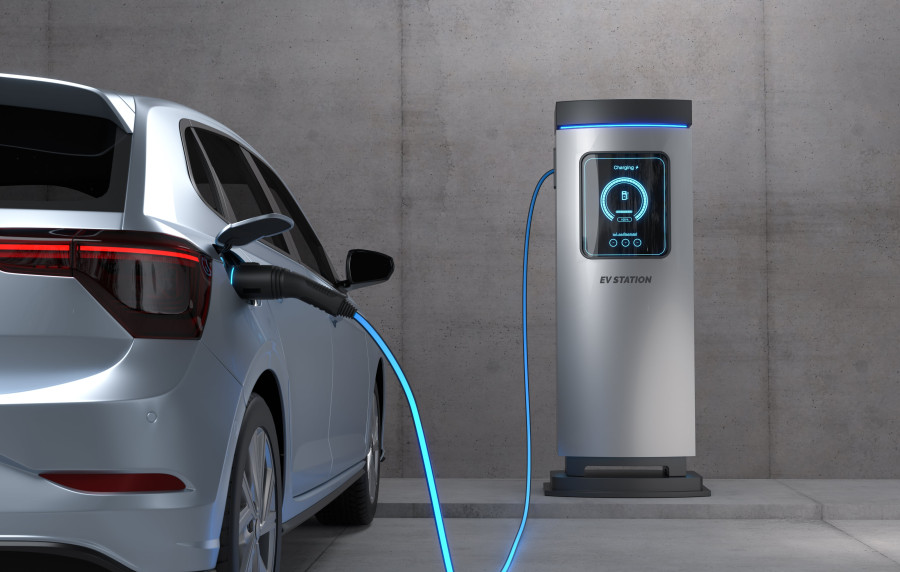Money
EVs grab a third of auto import value
Nepal imported automobiles worth Rs36.31 billion in first half of the current fiscal. EVs accounted for Rs12.73 billion.
Krishana Prasain
The shift to electric vehicles (EVs) in Nepal is setting a new record.
Now, EV imports account for one-third of the market share in terms of value.
The import of EVs jumped sharply by 158.31 percent in the first six months, from mid-August 2023 to mid-January 2024, according to the Department of Customs. Nepal imported 5,107 units of EVs worth Rs12.73 billion in the review period.
In the same period last fiscal year, Nepal had imported 1,749 units of EVs worth Rs4.92 billion.
Imports are mainly from China and India.
“People who have petrol/diesel vehicles are shifting to EVs due to cost factors,” said Nirmal Khatri, senior sales manager of Sipradi Trading, sole distributor of Tata Motors for Nepal.
“The operating and maintenance costs of internal combustion vehicles are high.”
According to him, riding EVs costs Rs1.5 per km compared to an average of Rs20 per km for fossil fuel vehicles.
“This saves a lot of money,” said Khatri.
Fuel cost on old vehicles is high. “So people are exchanging petrol/diesel vehicles for EVs.The number is big and growing,” said Khatri.
Industry insiders say orders for EVs are huge as people worry that the government could impose taxes in the next fiscal year following pressure on the revenue.
Due to high import taxes levied on petrol/diesel vehicles, it is still one of the highest revenue-generating imports for the Nepal government, after petroleum products, iron and steel, electrical machinery and mechanical appliances.
Import of petroleum products, however, has started to drop gradually. Nepal’s petroleum imports bill dropped by 4.46 percent to Rs157.75 billion in the first six months of the current fiscal year.
The government’s revenue from petroleum products stood at Rs56.09 billion in the review period.
The country imported automobiles worth Rs36.31 billion in the first six months of the current fiscal year and generated revenue of Rs26.51 billion.
The government statistics show that of the total automobile imports, the share of EVs is one-third in terms of value. The taxes from EVs, however, are Rs5.67 billion.
Industry insiders say that female buyers, particularly for EVs, are increasing steadily due to automatic driving features.
They said growth of charging stations has also increased the EV demand.
There are more than 150 charging stations across the country, built by both the government and private sector, said Khatri. Their numbers have increased rapidly in the past two years, he said.
Automobile dealers say the government’s disincentives (high taxes) for fossil fuel vehicles, along with rising fuel prices prompted Nepalis to switch to EVs.
Automobile dealers said affordable prices and up to 80 percent of bank finance are other pull factors of EV sales in Nepal.
In the last fiscal year 2022-23, the country imported 10,964 units of four- and three-wheeler vehicles worth Rs12.51 billion.
The government has introduced policies to encourage EV adoption.
In its second Nationally Determined Contributions, Nepal has declared that EVs will comprise 25 percent of all private passenger vehicle sales by 2025 and 90 percent by 2030.
Unlike fossil fuel-powered four-wheelers, which incur taxes of up to 261 percent, private EV four-wheelers were taxed only 23 percent (10 percent import tax and 13 percent VAT) until the last fiscal year.
However, the government changed its policy in the current fiscal year. The customs duty on EVs below 50 kW is 10 percent. For 50–100 kW EVs, the customs and excise duties are 15 percent and 10 percent, respectively.
For 100–200 kW EVs, the customs and excise duties are 20 percent each. For EVs in the 200–300 kW range, the customs and excise duties are 40 and 45 percent, respectively. Finally, for 300 kW EVs, the customs duty is 60 percent.
Auto dealers say the import boost for EVs is mainly due to easy financing by banks, which are now lending up to 90 percent of the vehicle cost.
Insiders say that if the EV batteries last long and there is adequate infrastructure, it may take up to five years to replace the light petrol/diesel vehicles in Nepal.
The import of electric two-wheelers has declined during the review period.
Nepal imported 3,667 electric motorcycles and scooters for Rs420.58 million in the first six months of the current fiscal year, a drop from 5,133 worth Rs652.86 million in the same period last fiscal year.
The country imported 5,035 electric three-wheelers worth Rs514.47 million during the review period, compared to 3,848 units valued at Rs375.86 million in the same period last fiscal year.
Similarly, the import of unassembled electric three-wheeler vehicles has also increased in the second quarter of the current fiscal year. The country imported 1,273 unassembled electric three-wheelers worth Rs148.81 million in the first six months of the current fiscal year, up from 348 units valued to Rs48.22 million in the same period last fiscal year.




 20.12°C Kathmandu
20.12°C Kathmandu















